Cotonou, Benin
February 9th, 2025
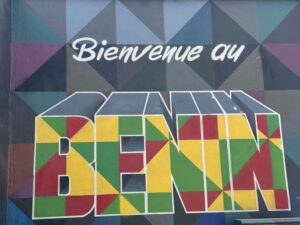
Cotonou cannot be described as a beautiful port. When I went outside onto the balcony I was confronted by huge cranes, not an enticing view.
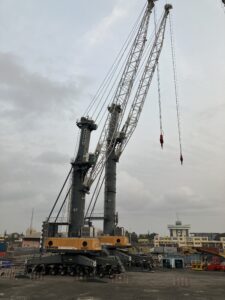
They were busy getting the gangway situated.
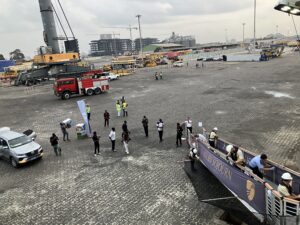
Soon we were joined by a group of children singing and drumming.
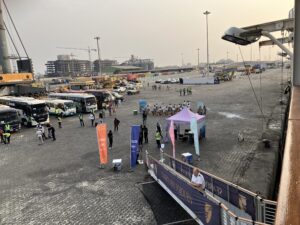
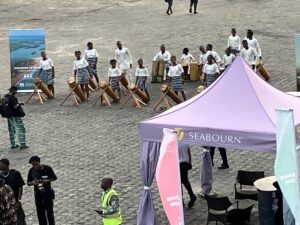
It was a great welcome to the port of Cotonou.
We have never been to Benin before, in fact I don’t think I had even heard of Benin before I read a book by a Zimbabwean author in which she described her difficulty getting a visa to visit Benin. Where is this place, Benin? I looked it up. OK, it used to be called Dahomey until 1975. It is a small country bordered by the northern shores of the tropical Atlantic Ocean, Togo, Burkina Faso, Niger, and Nigeria.
France took over the Kingdom of Dahomey in 1894 and incorporated it into French West Africa as French Dahomey. In 1960, Dahomey gained independence from France. Since then Benin has had democratic governments, multiple military coups, military governments and from 1975 to 1991 was a communist state called the Peoples Republic of Benin. In 1991, this was replaced by the democratic multi-party Republic of Benin. According to our guide, the country has remained a peaceful democratic republic since then. This is good to hear.
We were thrilled that our transport for the day was in a real motor coach with air conditioning instead of a tiny, cramped Coaster which we had been subject to in previous ports. Our excitement was short lived. The windows were in need of cleaning, and it was a challenge to see much of the outside world that our guide was telling us about through the caked-on dirt.
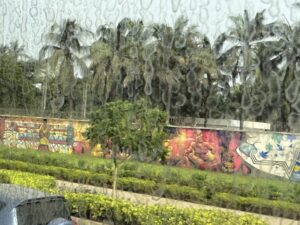
Our first stop was at the Benin Amazone statue. This is a 30-metre-tall statue honoring the women warriors of Dahomey. The statue represents an Agoodie, a term that refers to members of a regional military corps entirely composed of women. Both admired and feared for their bravery, the Agoodie participated in most of the military campaigns the Dahome Kingdom waged against its enemies for nearly 200 years. They were called the “Amazones du Dehomey” by the French colonial forces.
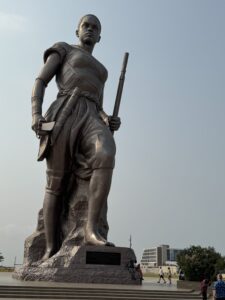
In the late nineteenth century, Dahomey was involved in the conflict with the French, who were expanding their colonial empire across West Africa. The Agoodie were key to the kingdom’s struggle to repel French army assaults, but their bravery was not enough in the face of French muskets.
On September 19, 1892, the Agoodie fought their last battle. Dahomey’s defeat by the French military led to the end of the kingdom and the disbanding of the Agoodie and Dahomey became a French colony in 1894.
I thought it was wonderful that Benin recognized the importance of these brave (but apparently rather cruel) women with such an imposing statue.
The legislative buildings
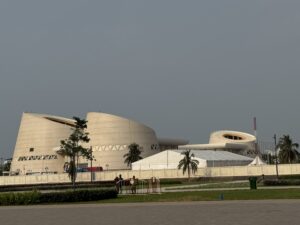
And Presidential Palace are near by (as seen through the coach window).

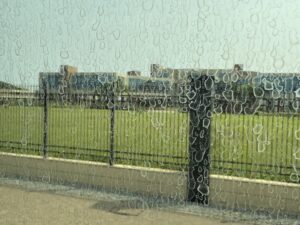
Our main goal of the day was to visit the Ganvie stilt village on Lake Nokoue.
In the 17th century the Tofinu were being pursued by Fon warriors who were kidnapping people in order to sell them to the slave traders. The Fon had a water phobia, and thus the Tofinu were able to find refuge in the shallow waters of the lake, and build a safe haven for them all. Ganvie means “I was rescued here”, and Tofinu have been living here ever since.
The only way to get to the village is by boat.
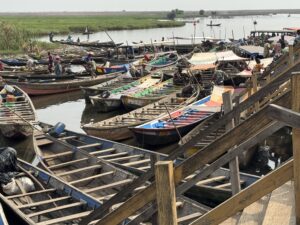
We passed by several villagers on our way to the stilt village.
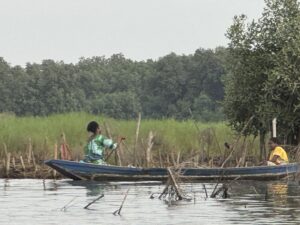
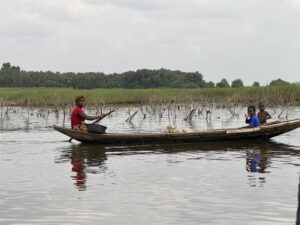
They have a very organized system of fish farming, and exist in a cash free society by bartering their fish for other food and needed supplies.
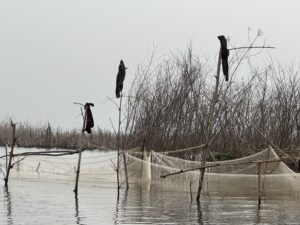
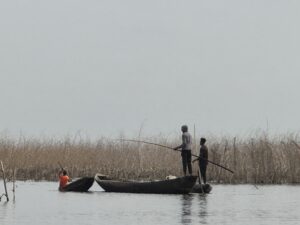
On our way to the village we were serenaded by singing and drumming
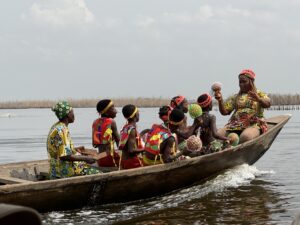
And entertained by a group of very energetic and talented youngsters.
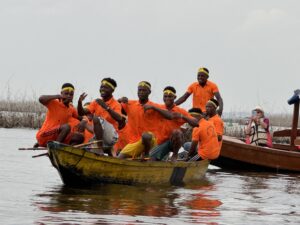
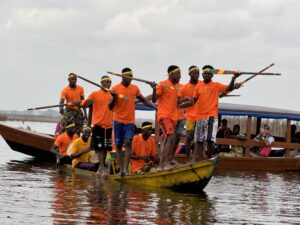
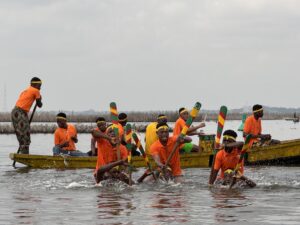
The village itself was totally amazing.
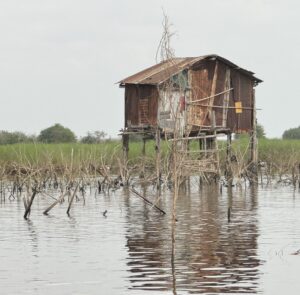
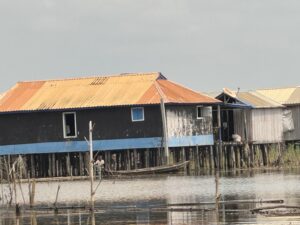
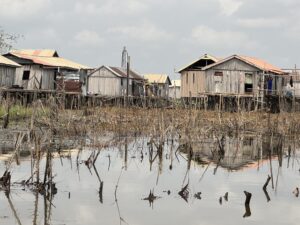
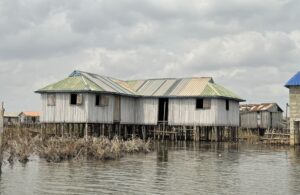
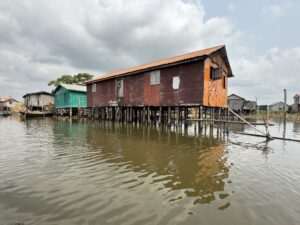
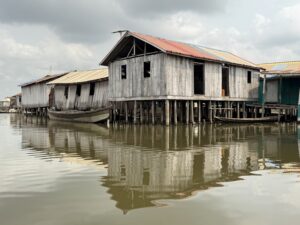
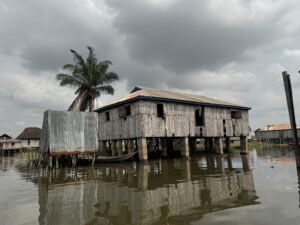
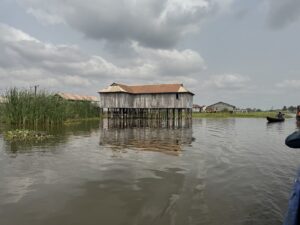
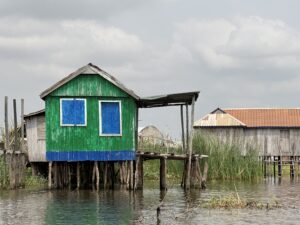
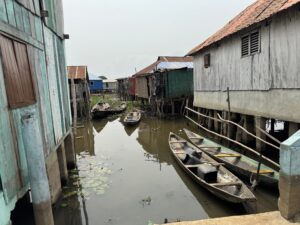

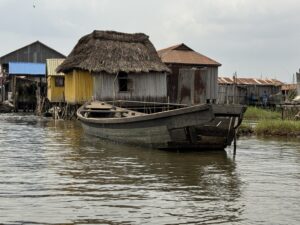
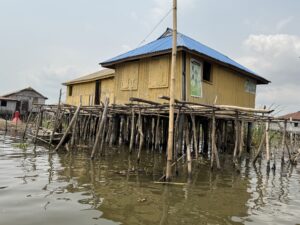
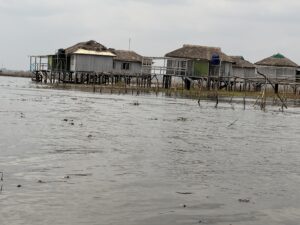
We passed by the market
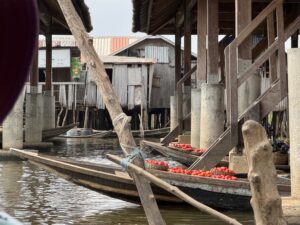
And they are building a new community center.
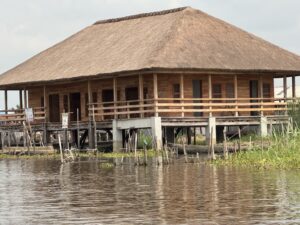
We stopped at a local craft market which was full of wonderful treasures
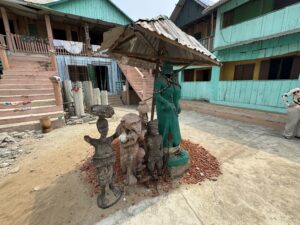
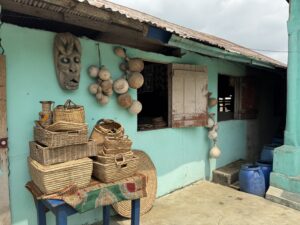
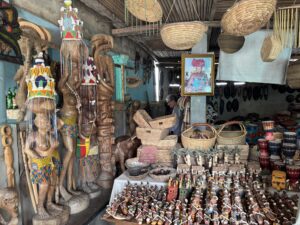
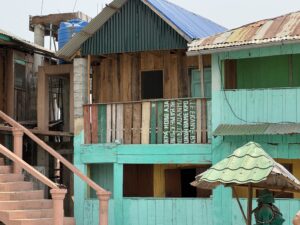
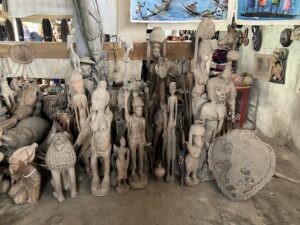
One thing I had noticed was that the men in Benin wore wonderfully brightly coloured suits, and the fabric of this one in particular caught my eye. I would love to have a sun dress in that fabric.
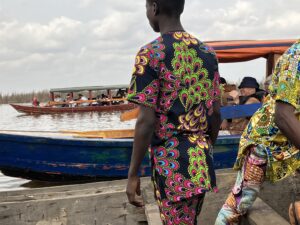
However, although they were selling fabric in the shops, nothing was quite as nice as that!
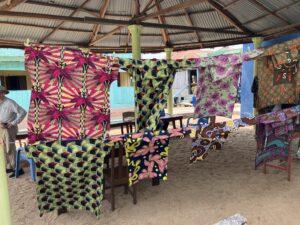
On our way out of the village we passed the local hotel. Now that looks interesting.
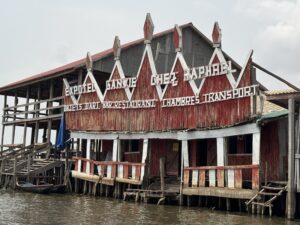
We saw several more people fishing on our way back to the shore
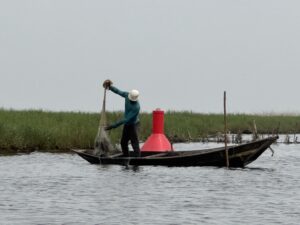
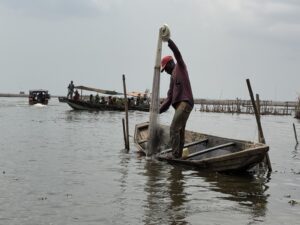
And were amazed at how close we were to the city, yet it felt like we were in another world.
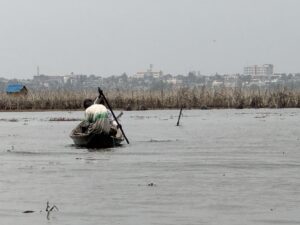
It was so peaceful in the stilt village, and it was amazing to think that the inhabitants have lived there for over 200 years, replacing their homes every 8 to 10 years as the stilts became waterlogged and disintegrated.
However, things are gradually changing here too. There is a school, but the children have to go away to attend university, and frequently do not come back to the village. It is still a very vibrant community, but is at risk of just becoming a tourist attraction as the younger generations leave, and the remaining older inhabitants find it increasingly difficult to survive without the support of the youngsters. It would be so sad to see that happen.
We returned to Cotonou for lunch at the Le Teranga restaurant.
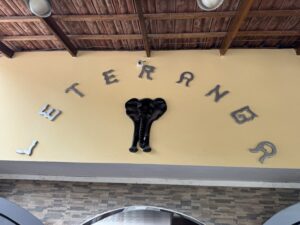
The information about the tour said we would be treated to local cuisine, but it turned out to be a Lebanese restaurant. When we questioned our guide about it he told us that the family who owned the restaurant had been in Benin for over 200 years, so they really were local. Well the lamb kebabs and rice pilaf were delicious, so I am not complaining.
We noticed that unlike many of the other countries we had visited, there were no tuk tuks all over the road. This is because they have a system of motor bike taxis. The drivers wear yellow shirts, and because you are on a motor bike, they can get you through the congested streets in no time at all. We looked out of the coach window, and sure enough there was a motor bike taxi.
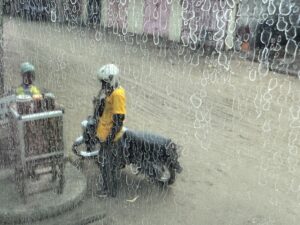
Our final stop on the way back to the port was to look at some magnificent wall art done by 40 different artists to brighten up the previously boring wall at the port entrance. It was truly amazing. All of the panels were meant to depict some aspect of life in Benin. Some were a bit weird and it was difficult to see the connection, but they were all interesting.
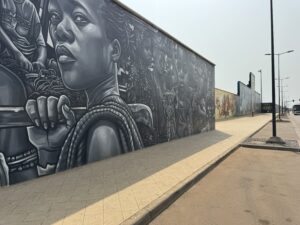
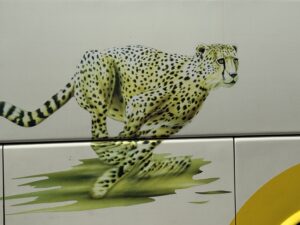
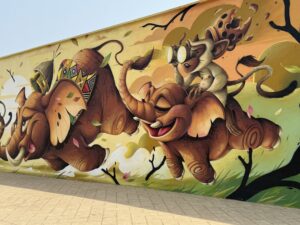
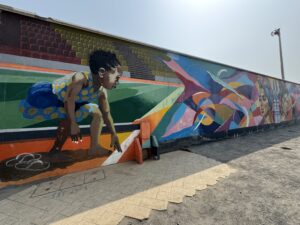
Back at the ship we noticed that there was some rice on the quayside. Later, we saw that they were sweeping it up. We were not sure why it took 6 sweepers and a supervisor to complete the clean up job, and they didn’t do a particularly good job either!
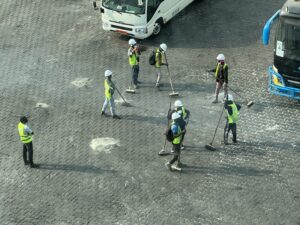
We sat on deck waiting for the sail away at 6:00 PM, but then the captain announced that we would not be sailing until midnight.
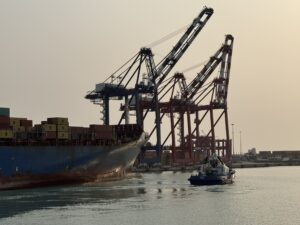
Apparently we only have a short distance to travel to Lome tomorrow, and as we are still in the Gulf of Guinea the rule is that you have to travel at a fast rate to outrun the pirates. Thus we will wait here until midnight, and then make our way to Lome.
We had dinner on the terrace at the Colonnade. Only instead of being mesmerized by watching the wake below us, we were illuminated by the lights of the port.
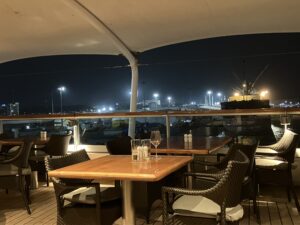
Nick did a reprise of his show tonight. Even though it was identical to his previous performance, I enjoyed it immensely. He has a fabulous voice, and is very engaging, we are so lucky to have him on board.


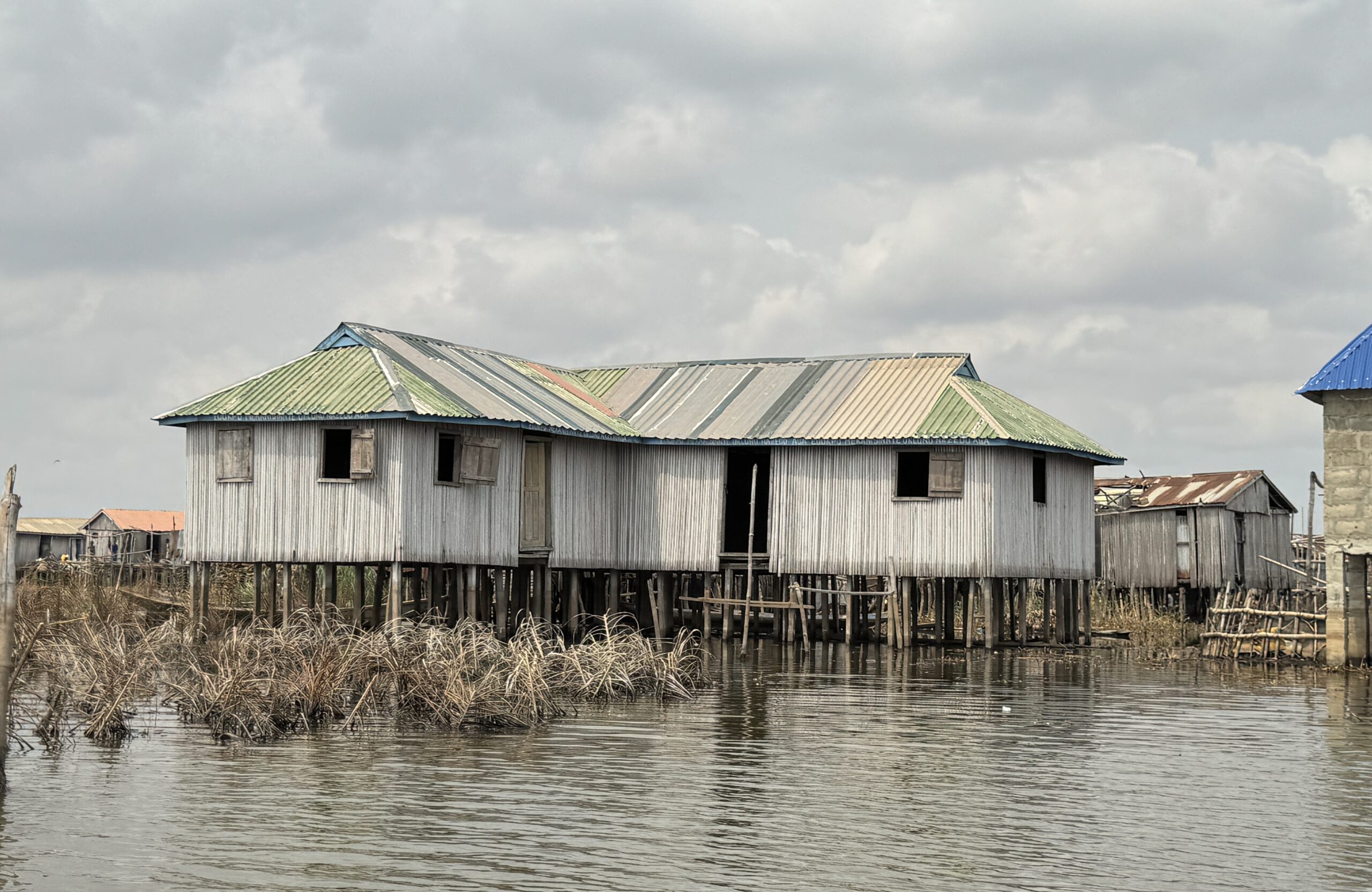
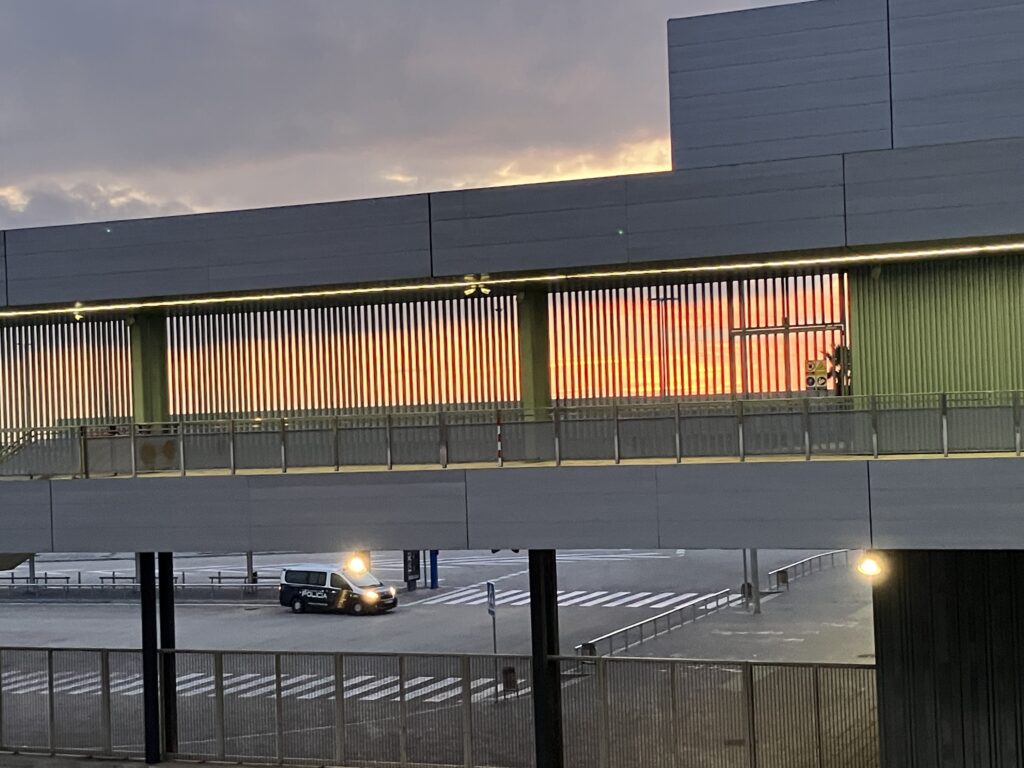

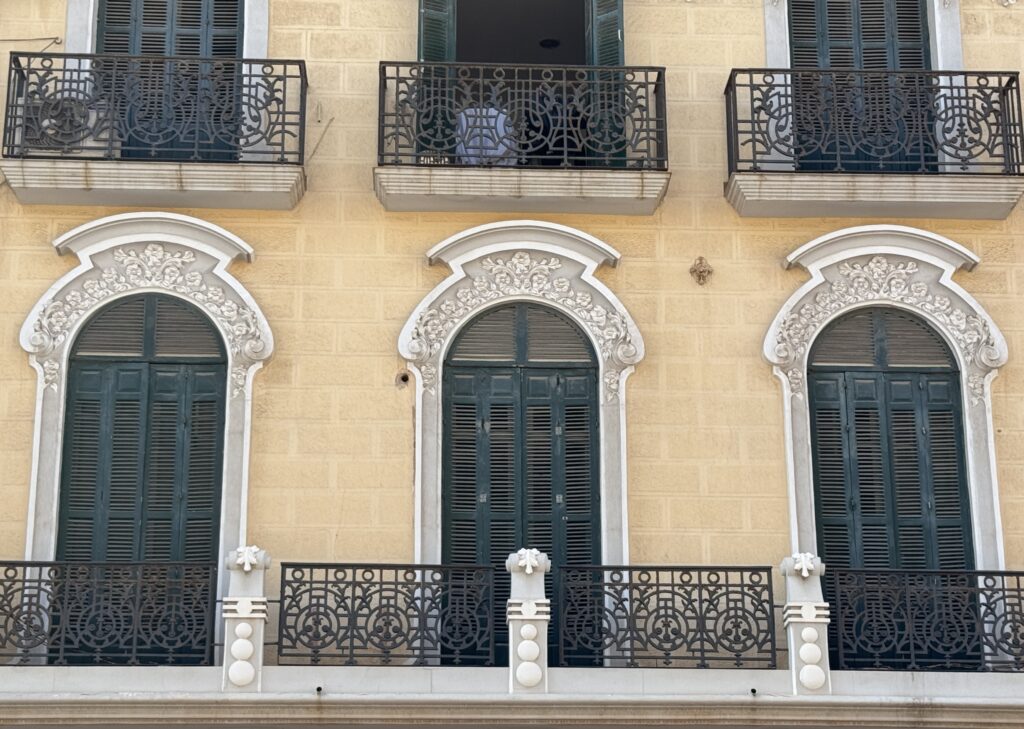
Fascinating – a totally different life in Africa.
It certainly is a very different Africa from the one we know and love!
In southeast Asia there are similar villages with with stilt housing perfec, and they’re having the same problem with sustainability
Young people want a more sophisticated life so this as well as the crafts ( did you buy any? ) will not be here in the next decade
I wish there was some way to keep the youngsters invested in maintaining their way of life in these villages, it would be such a shame if they just became tourist attractions rather than vibrant communities. I was able to refrain from buying crafts, but it wasn’t easy!